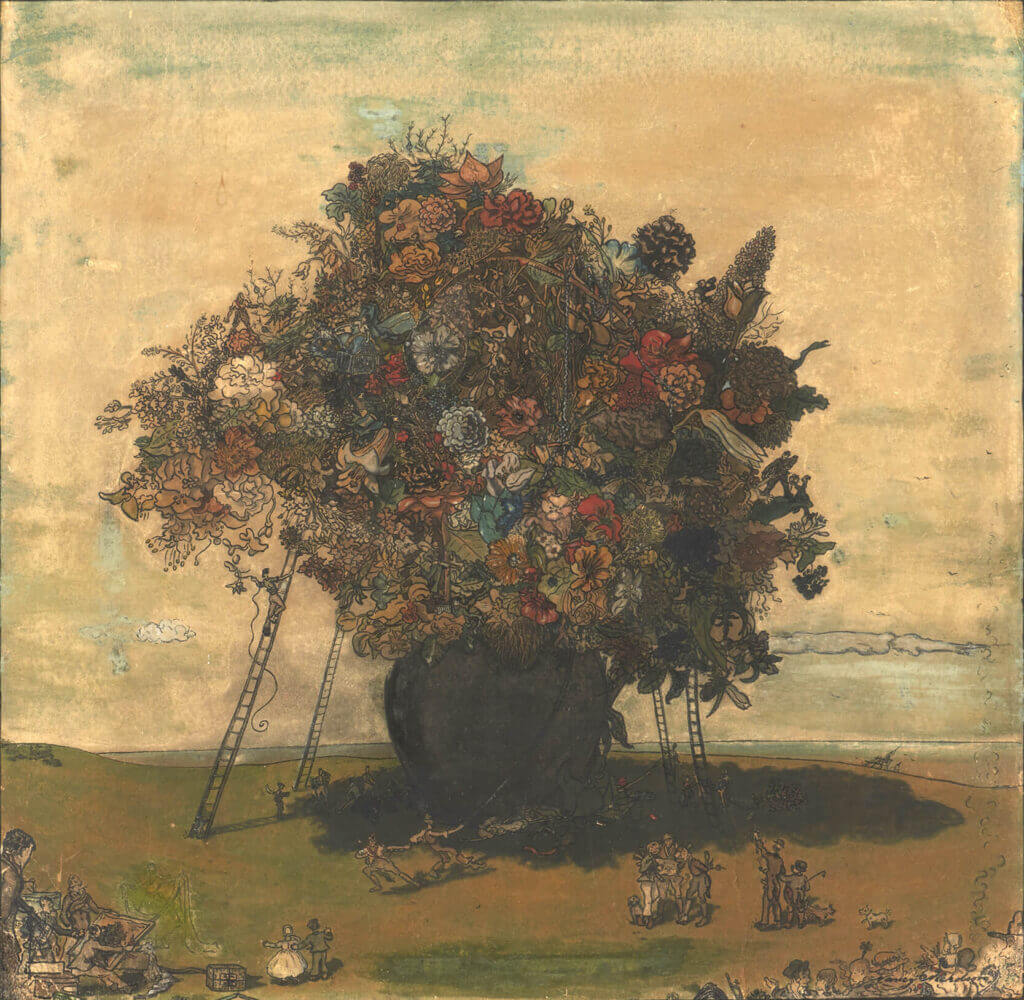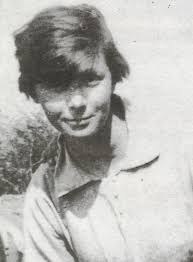Your currently viewing RAW Modern | Switch to RAW Contemporary
William Nicholson at Work, 1918
Nancy Nicholson came of two artistic lines, each rooted in the transfiguration of the domestically observed. Her father was William Nicholson, her mother Mabel Pryde, herself daughter of distinguished Scots artists and sister of James Pryde, whose work summons melodrama from – very often – just a bed in shadows. Her brother was Ben Nicholson, who married Barbara Hepworth. She might have sunk within the large surrounding talents but did not. That it is as herself that we meet Nancy Nicholson, in her work and in written accounts, is testament to her capacities, irreducible talent and sense of self as artist and as individual. She is much memorialised on account of being, in another connection that might have diminished her, first wife to Robert Graves and mother of his older children; she withstood too the testing, and all too biographically tempting, presence of the electrifyingly exigent poet Laura Riding far too far inside this marriage. Yet her art refuses to be ‘smallened’, as she refused to take Graves’s name, this last noted with relaxed curiosity by the great novelist when the couple visited Thomas Hardy, late in his life, at his home Max Gate*. The word ‘smallened’ is Hardy’s own; charged by critics with coining it, he consulted an etymological dictionary – the citation was from his own work. When does freshness become orthodoxy? The fresh word seems apt to this painting that plays so productively with scale, the closely-seen bunch of flowers worked upon by her tiny – but not, I think, belittled – father and approached by her similarly smallened but daring husband Robert Graves in his corner. We feel the tremor of the ladder through our own feet, and at the same time in our head and heart we sense the worth of reaching towards the bunch. The language of the work is satisfying in composition as one would expect of a print maker, effective on contextualising and subversive levels as one would expect of a dedicated feminist, and richly, acutely seen, transmuting an apparent still life into a telling human dynamic. It is more a lively than a still life. Commentary by Candia McWilliam, prize-winning author. * The Sphere 28 January 1928

